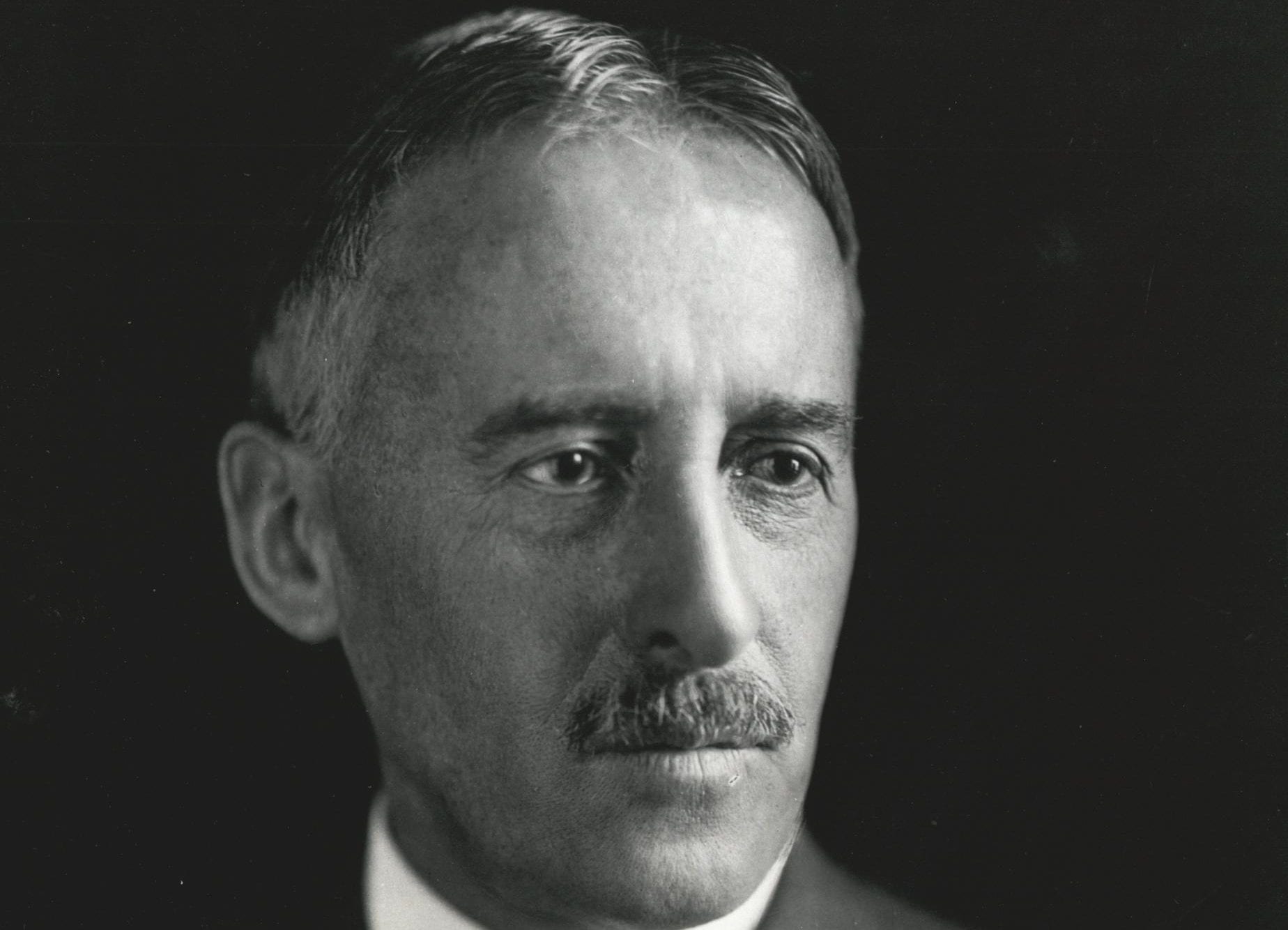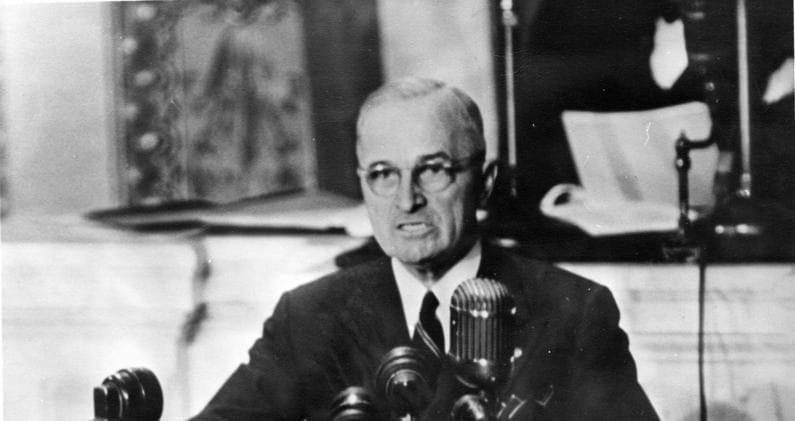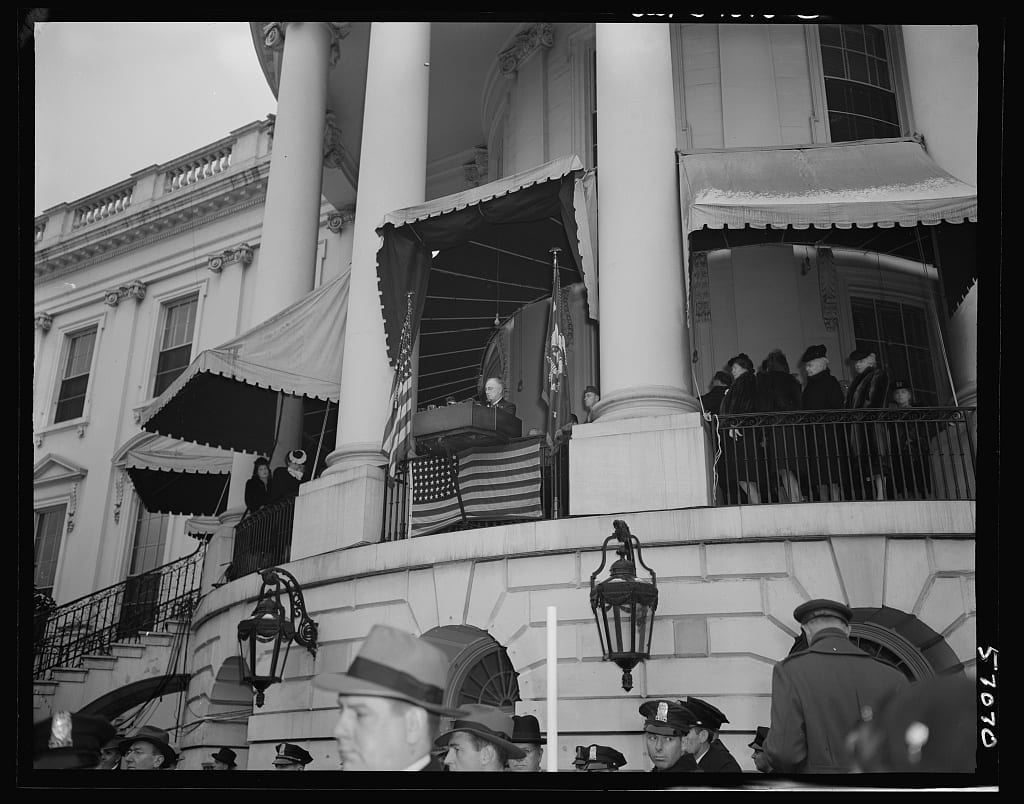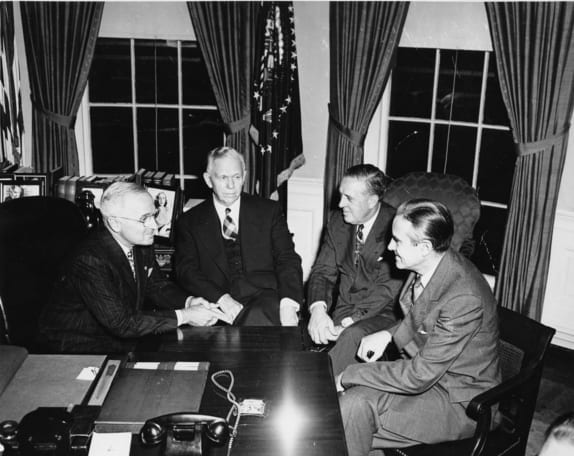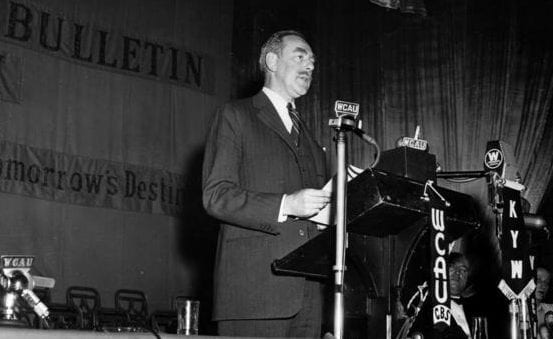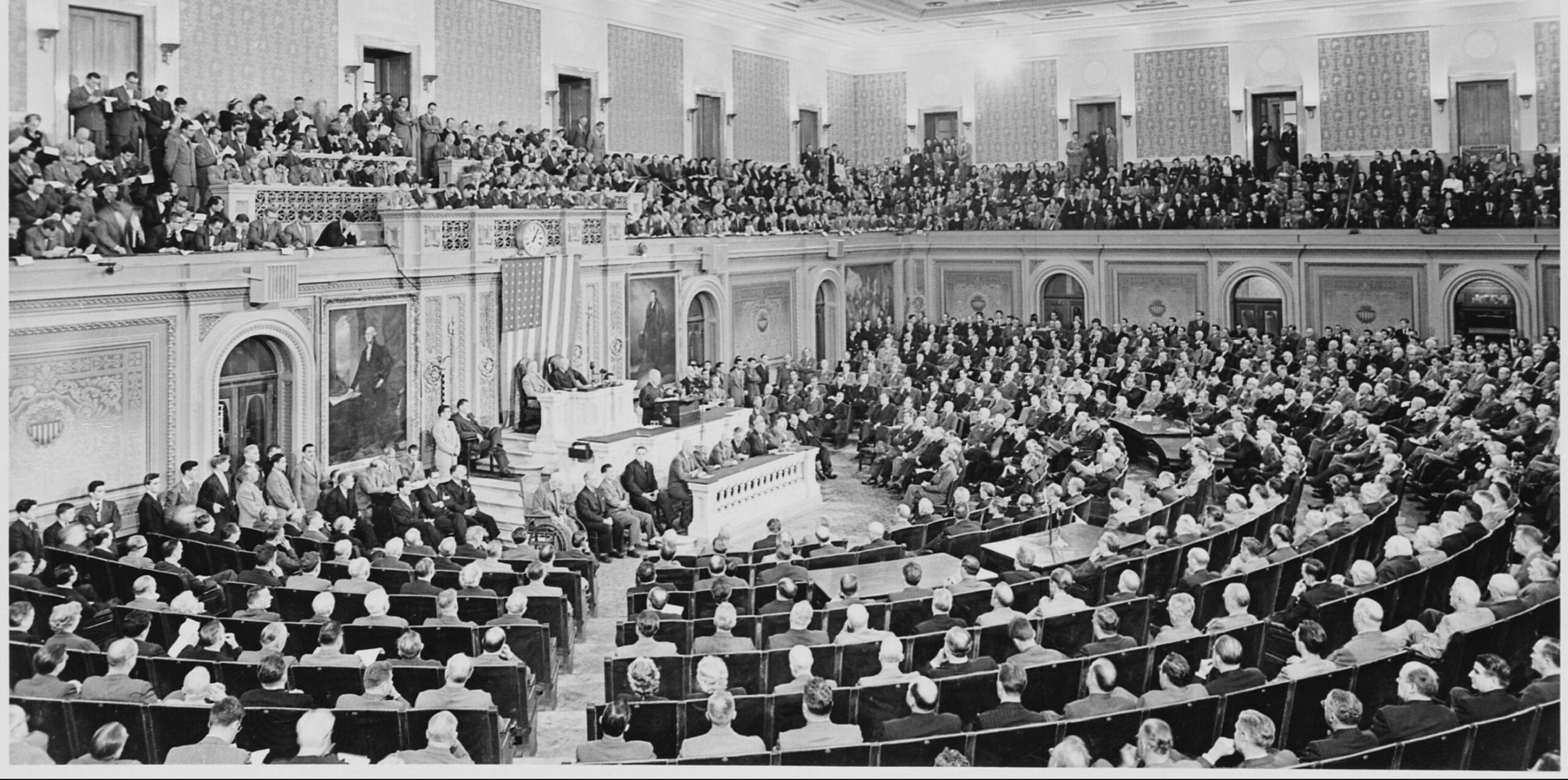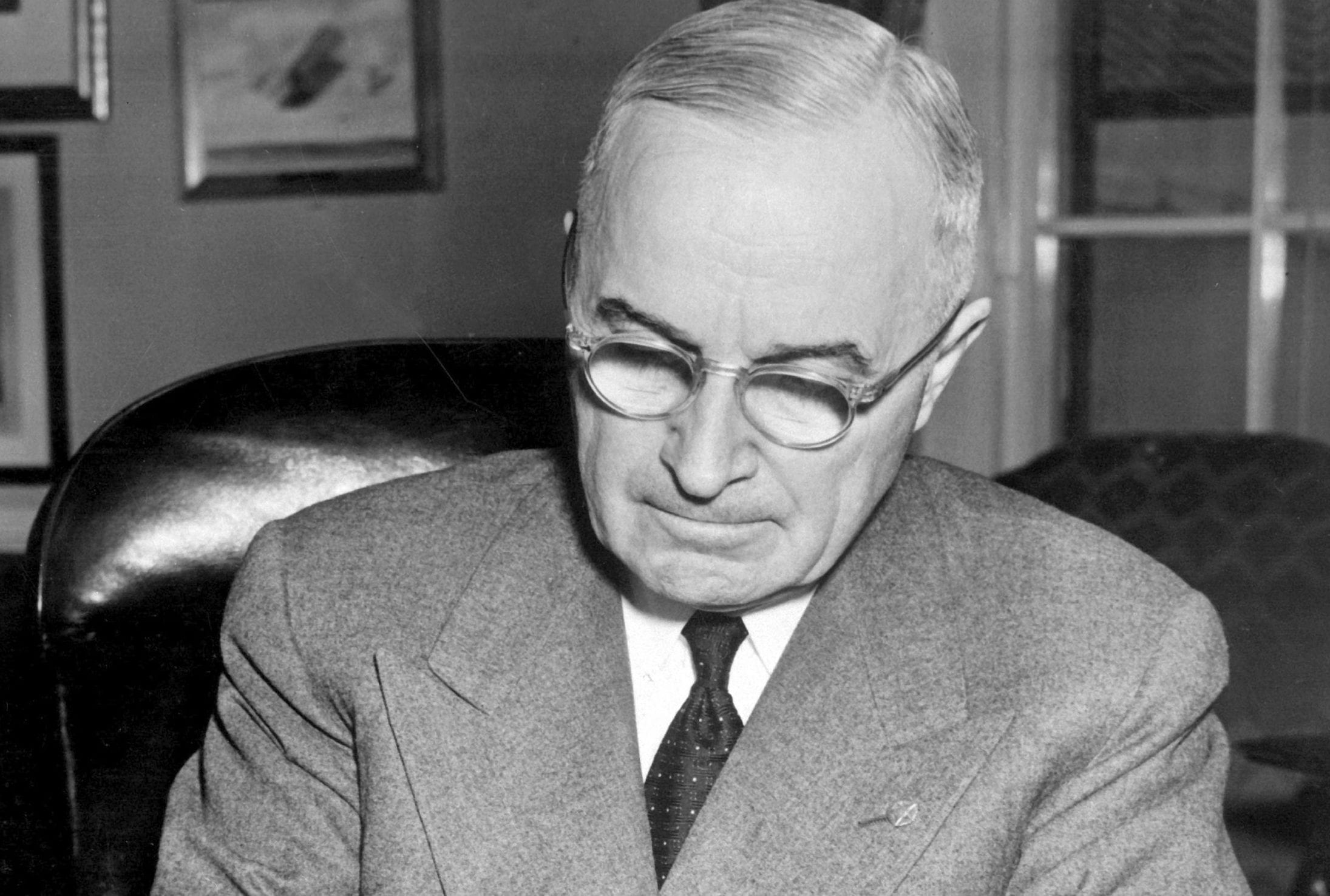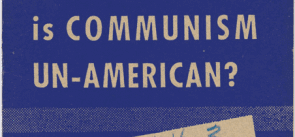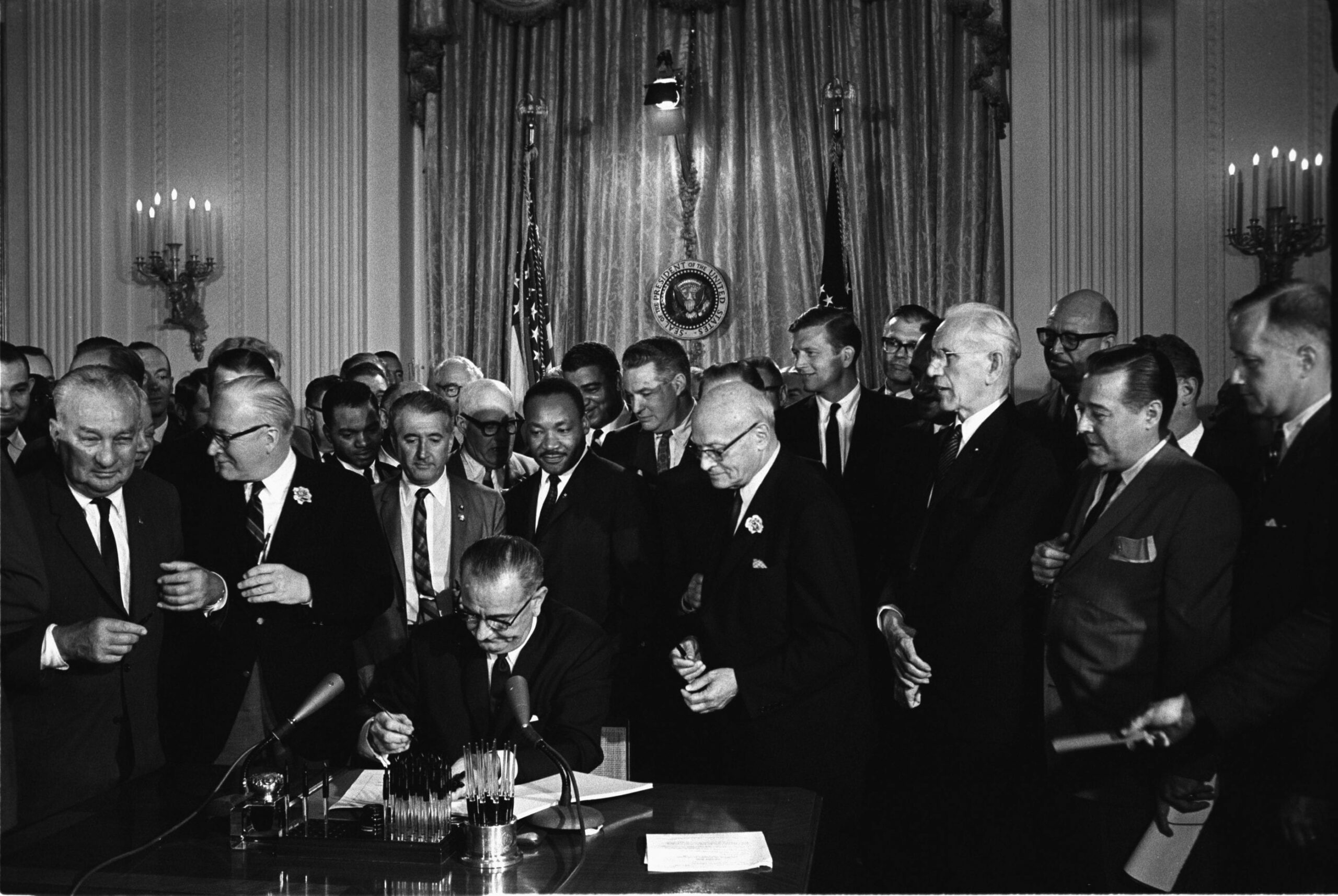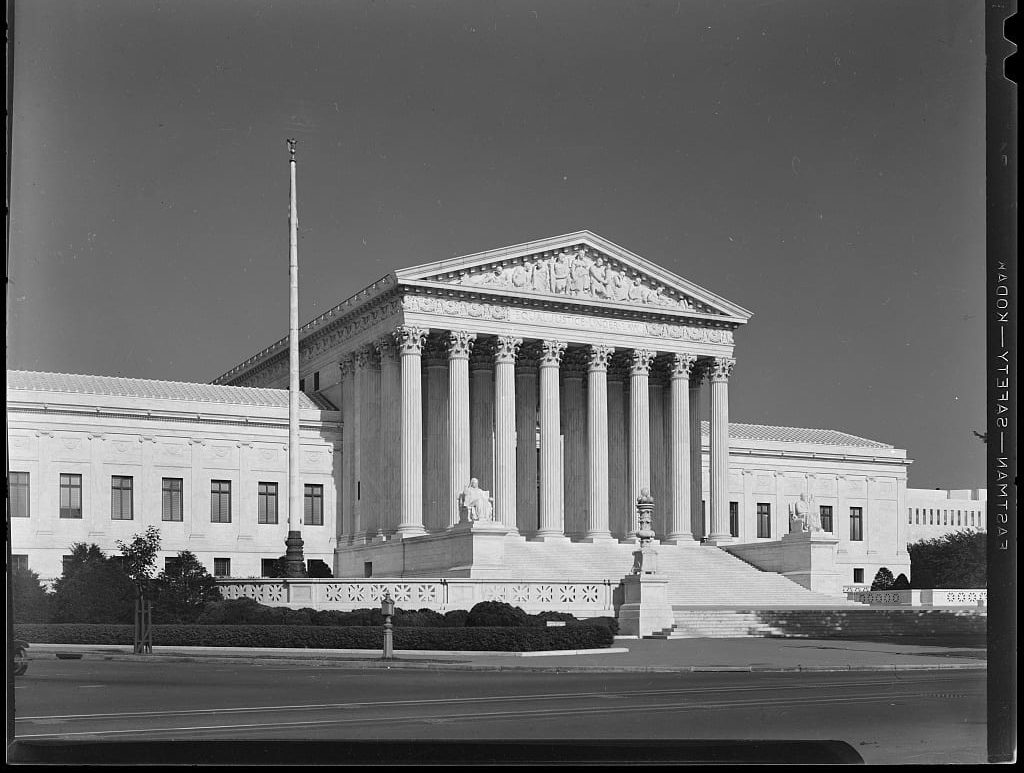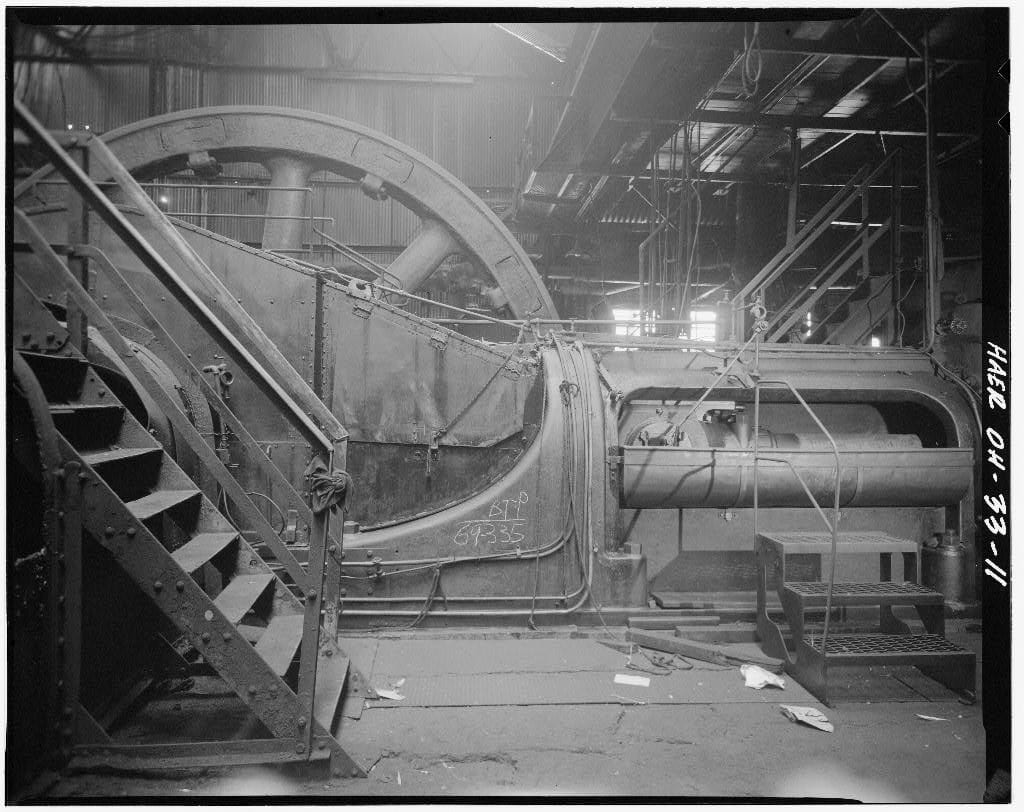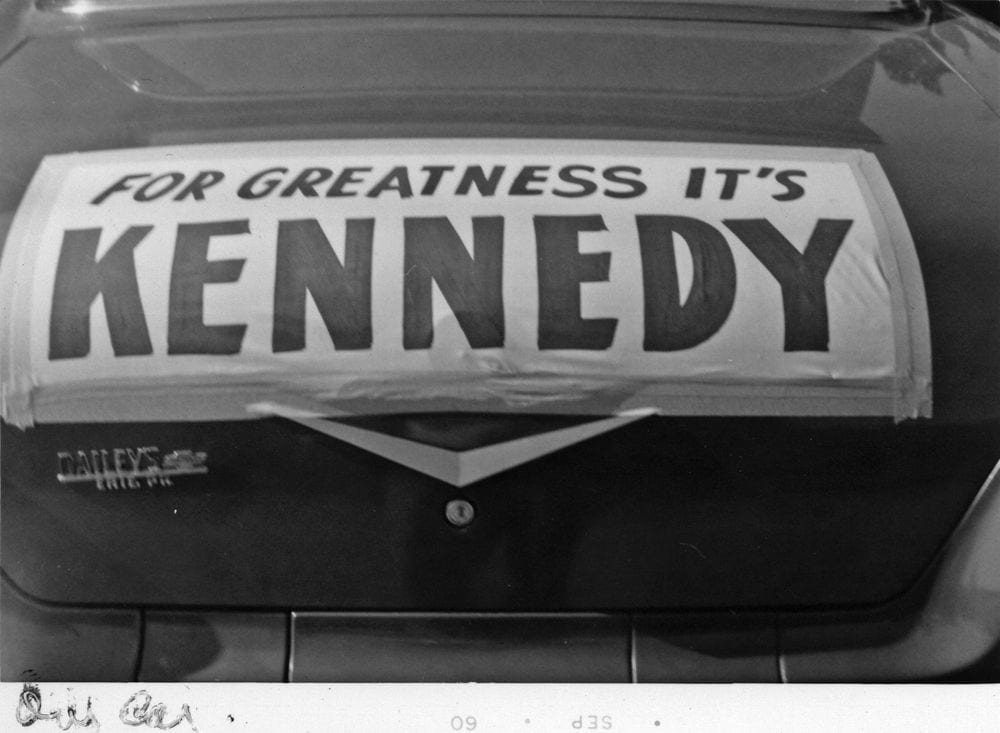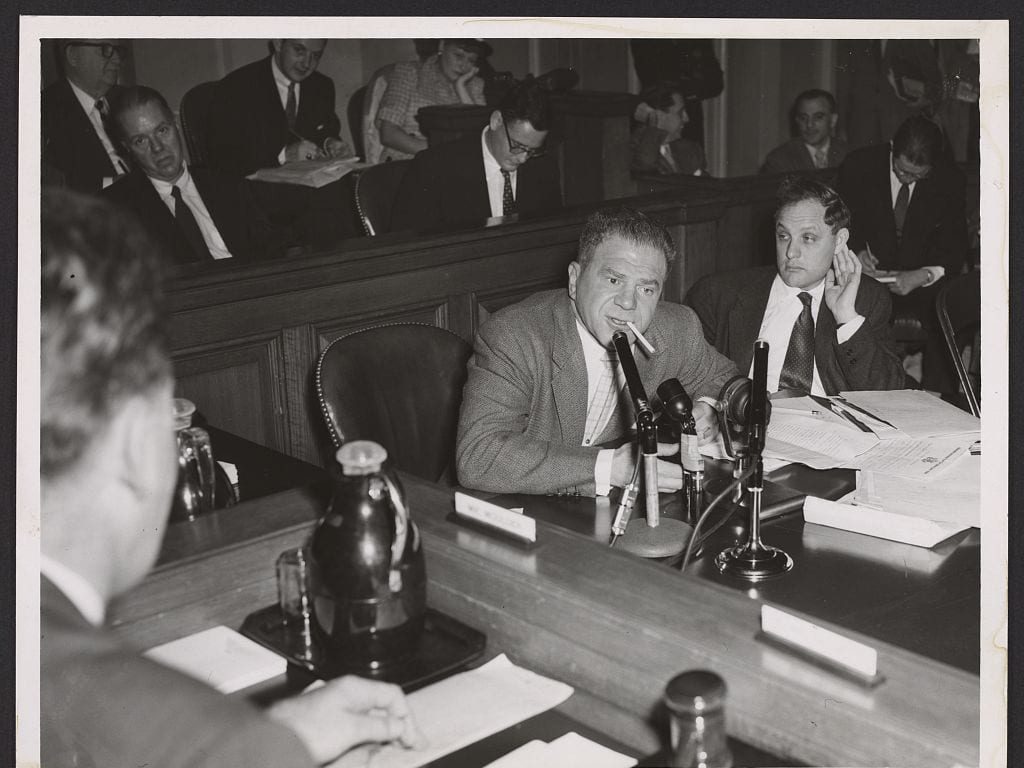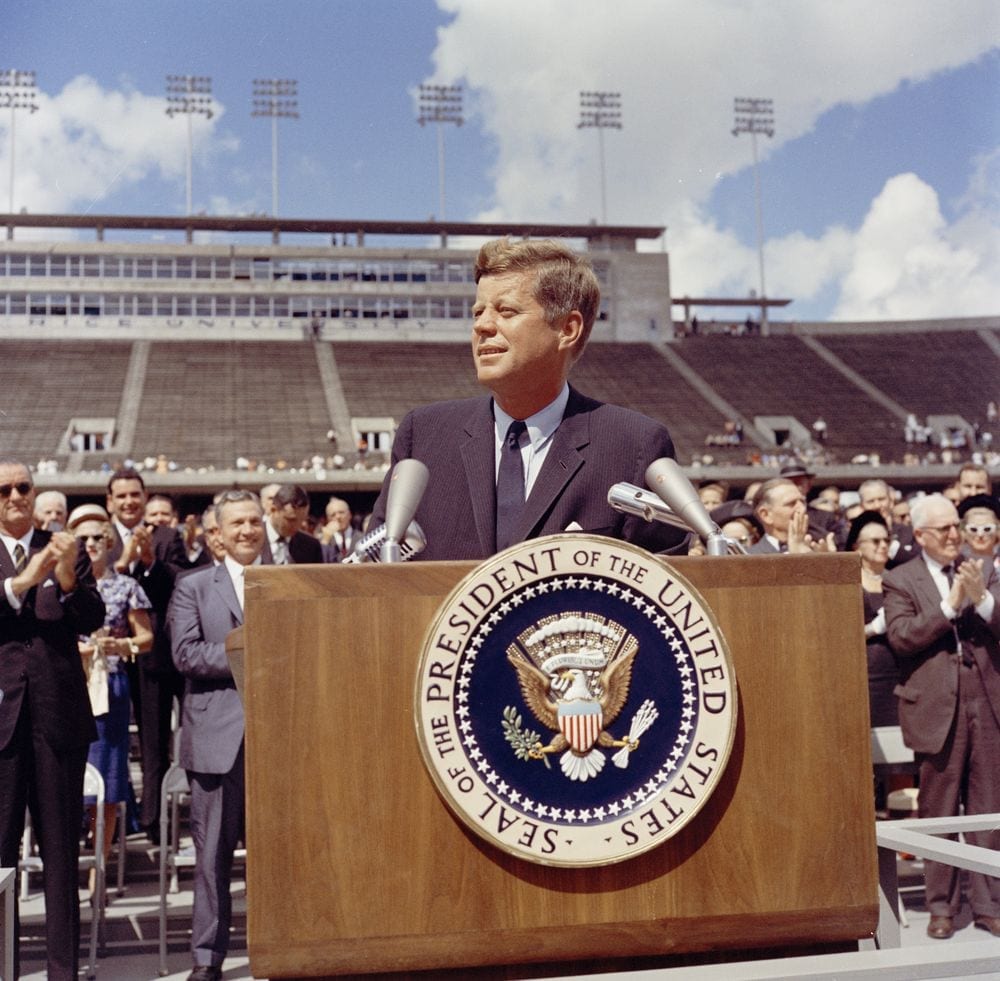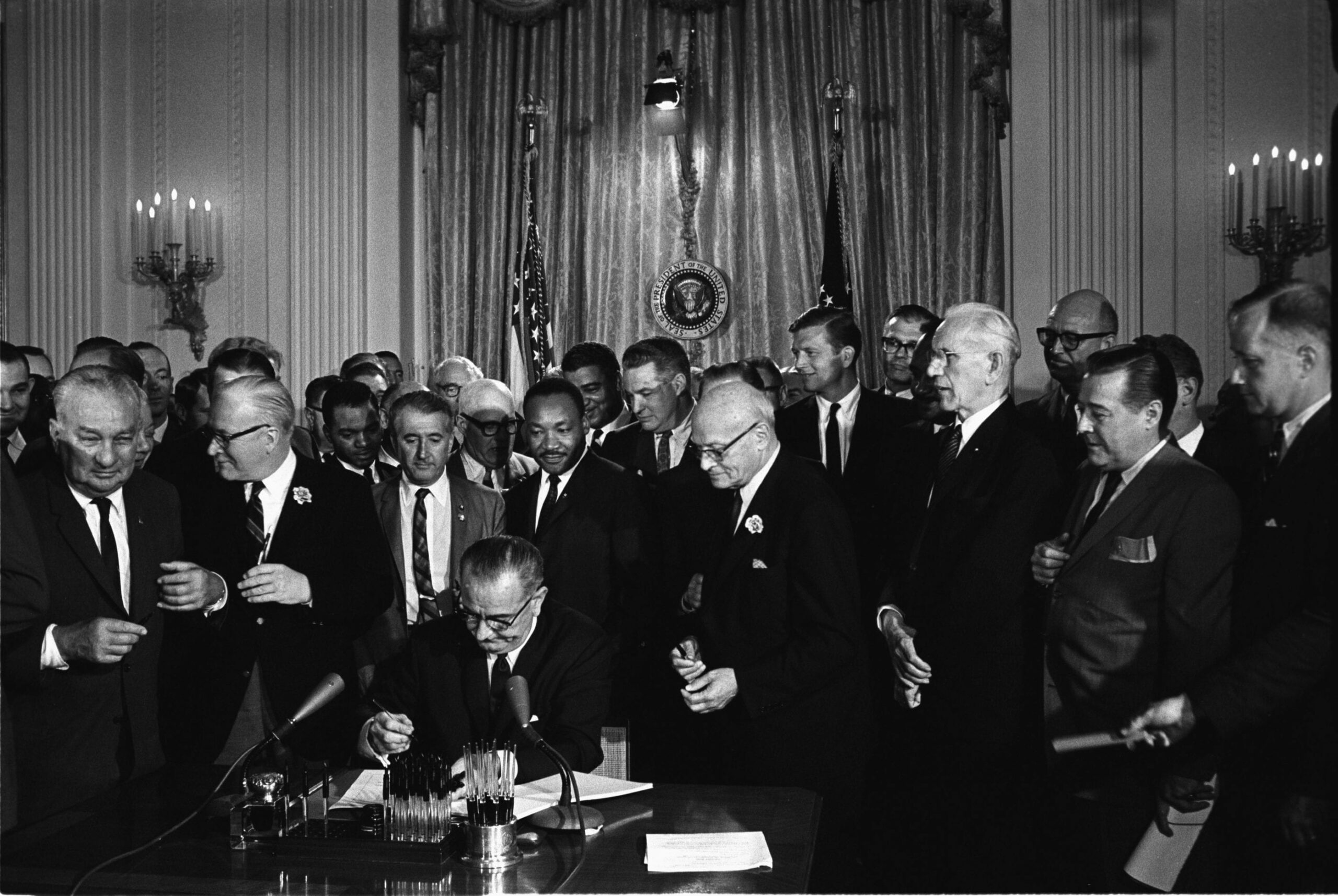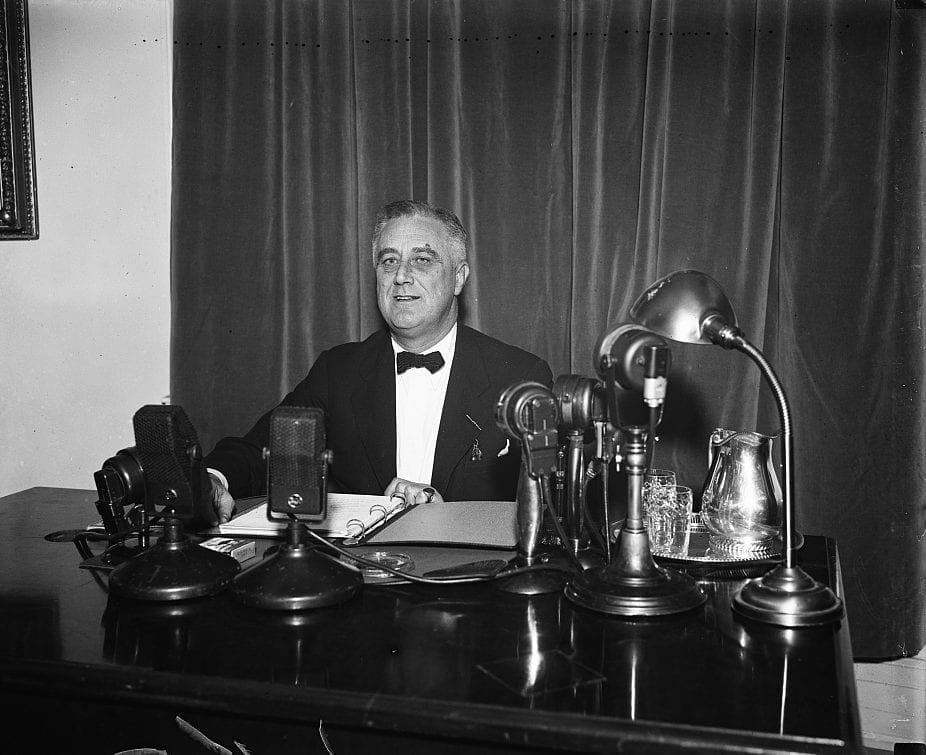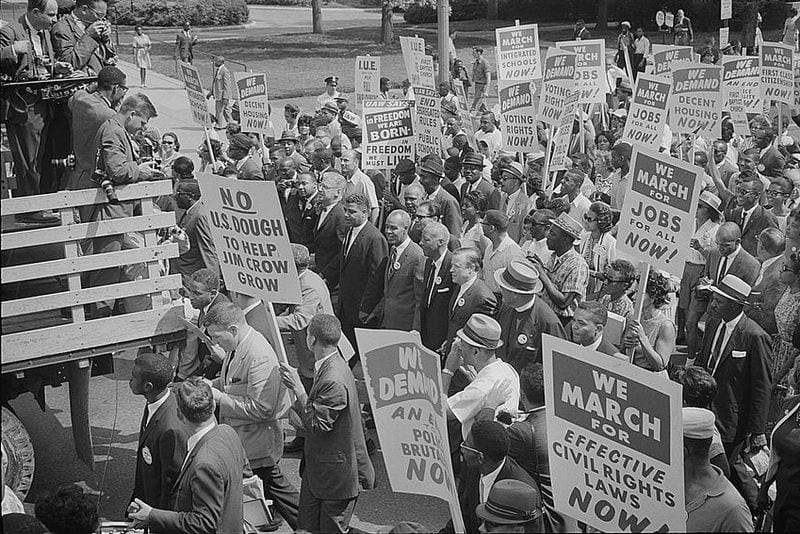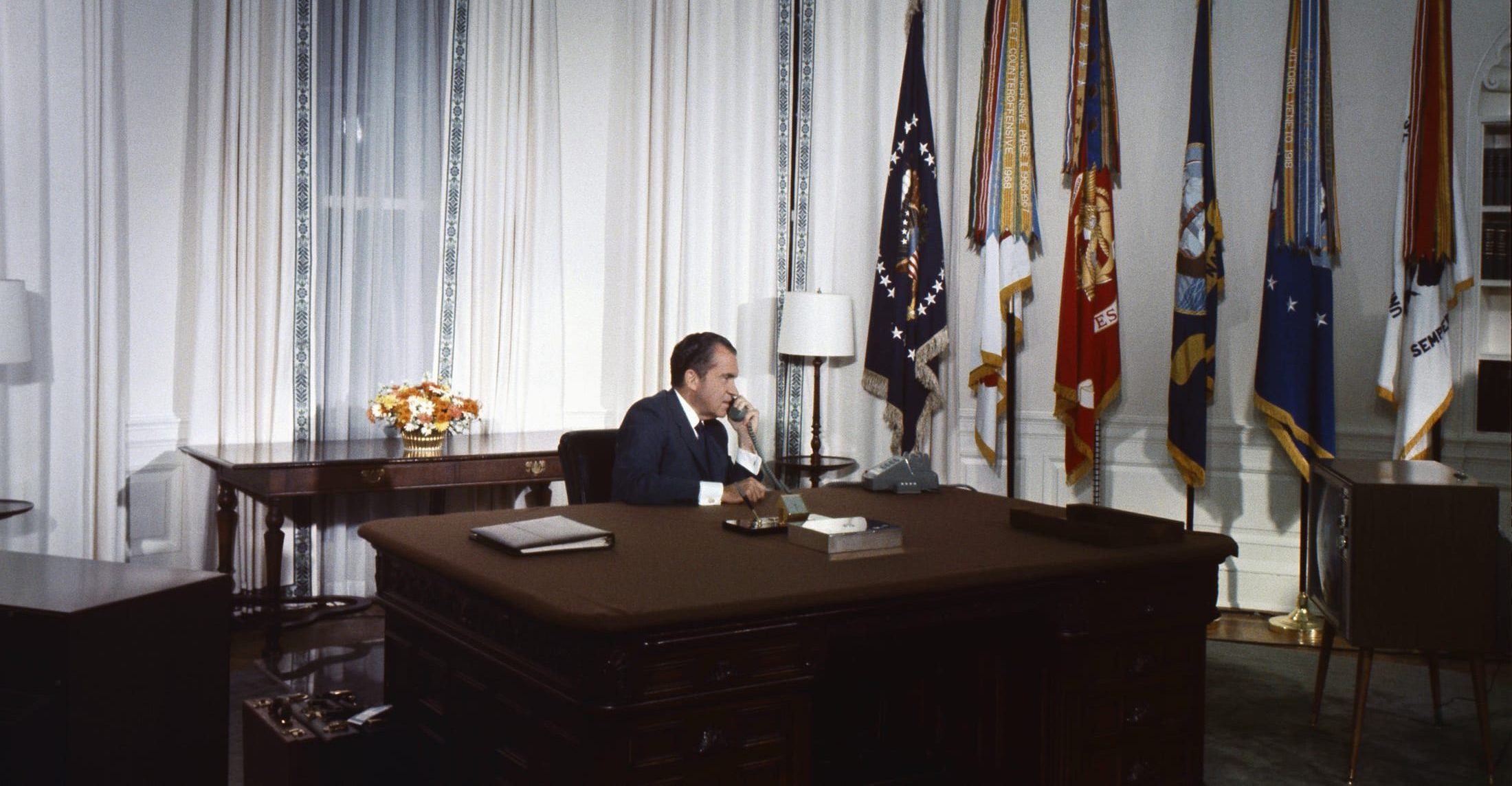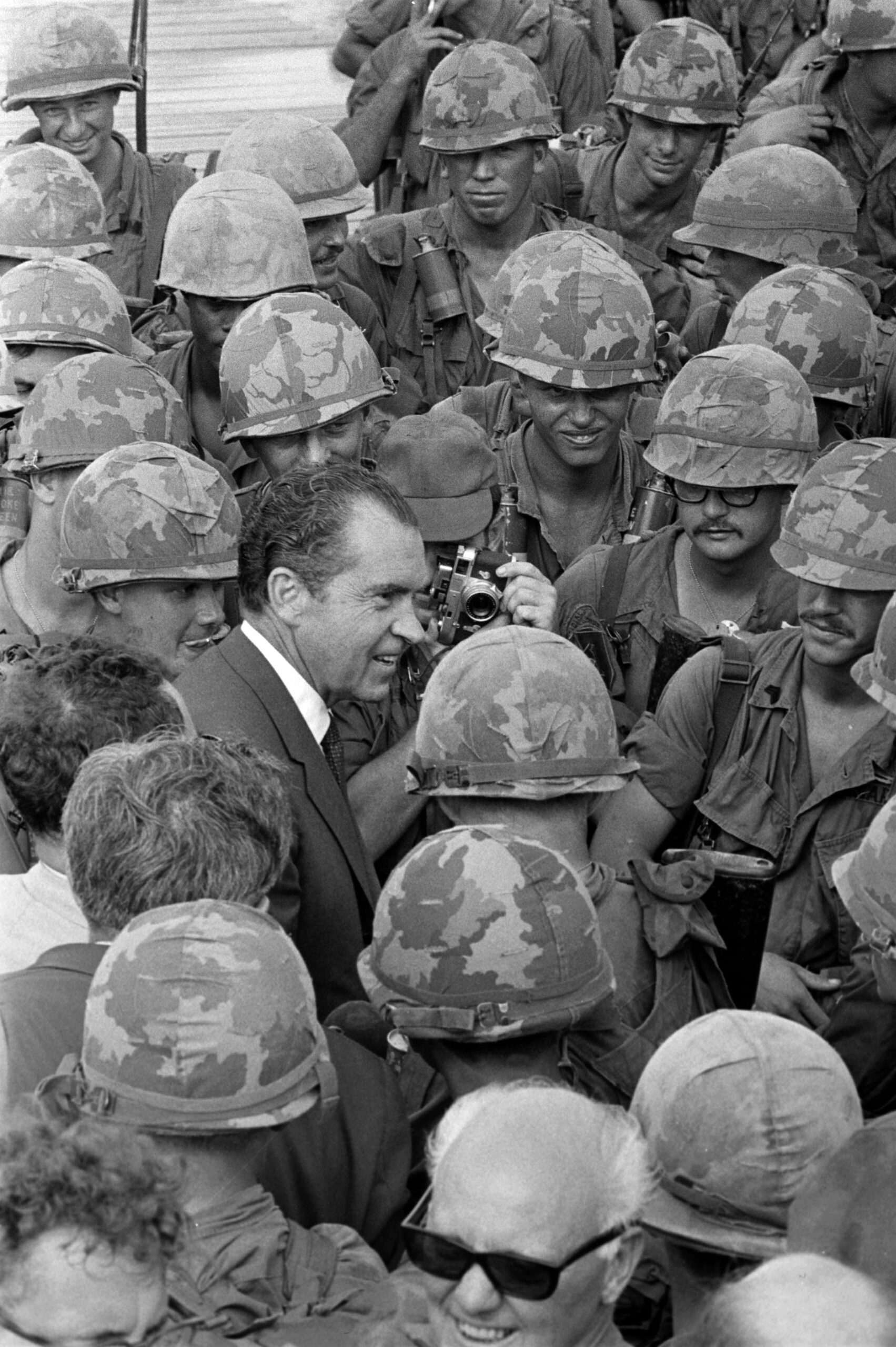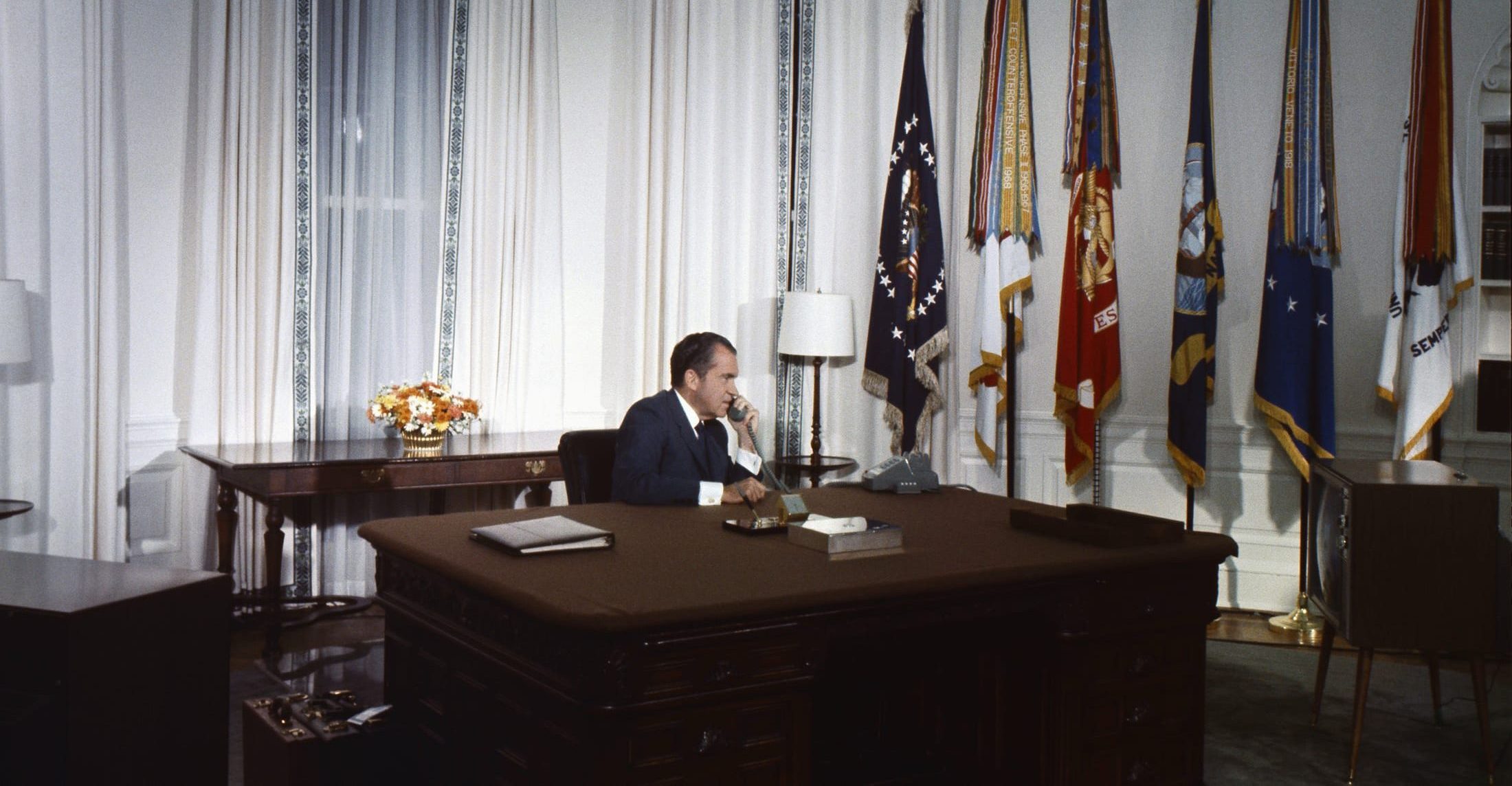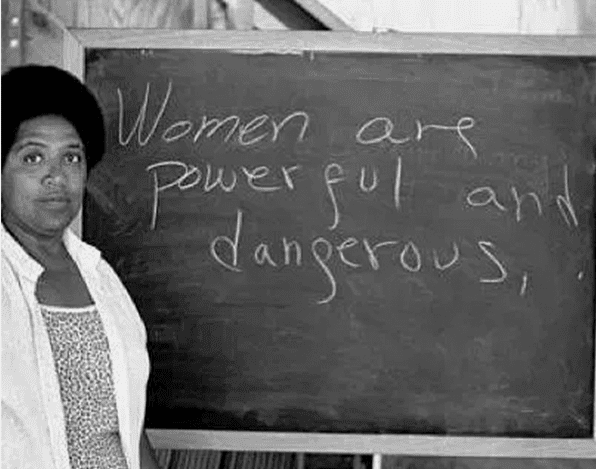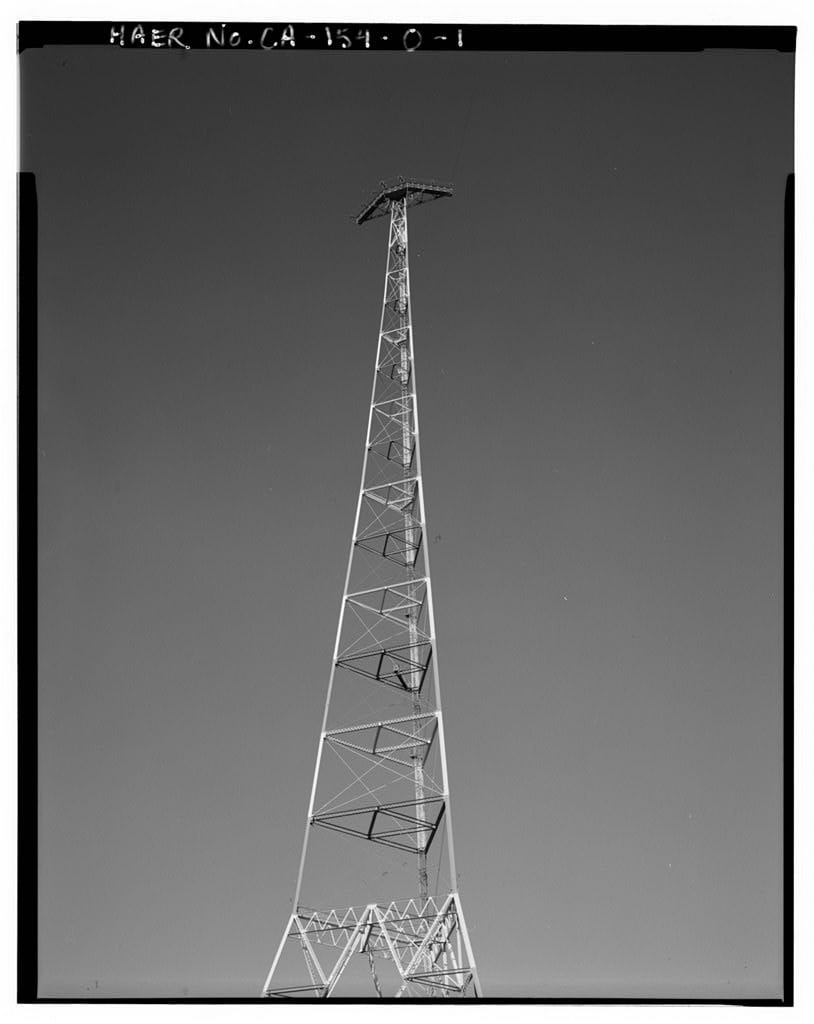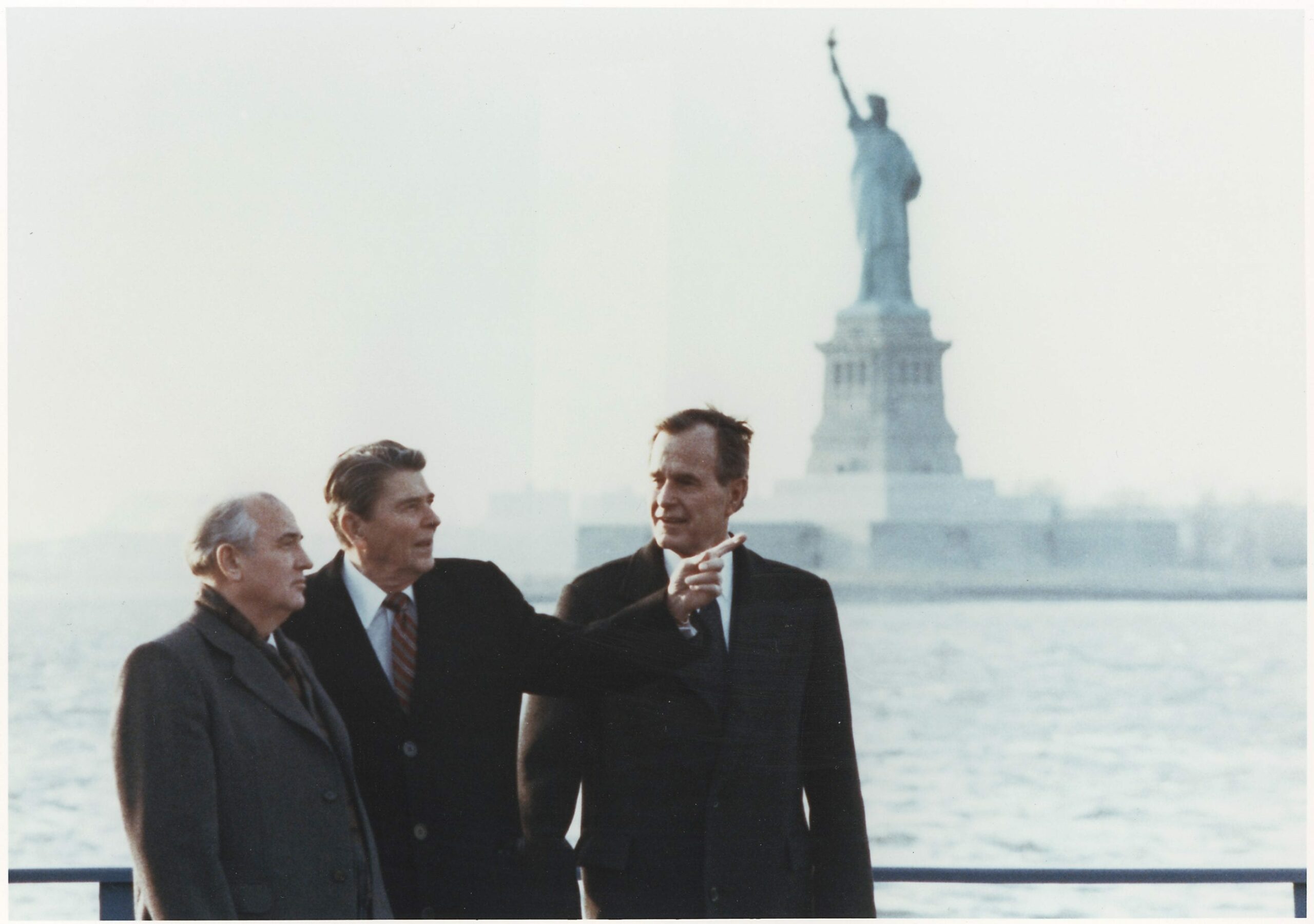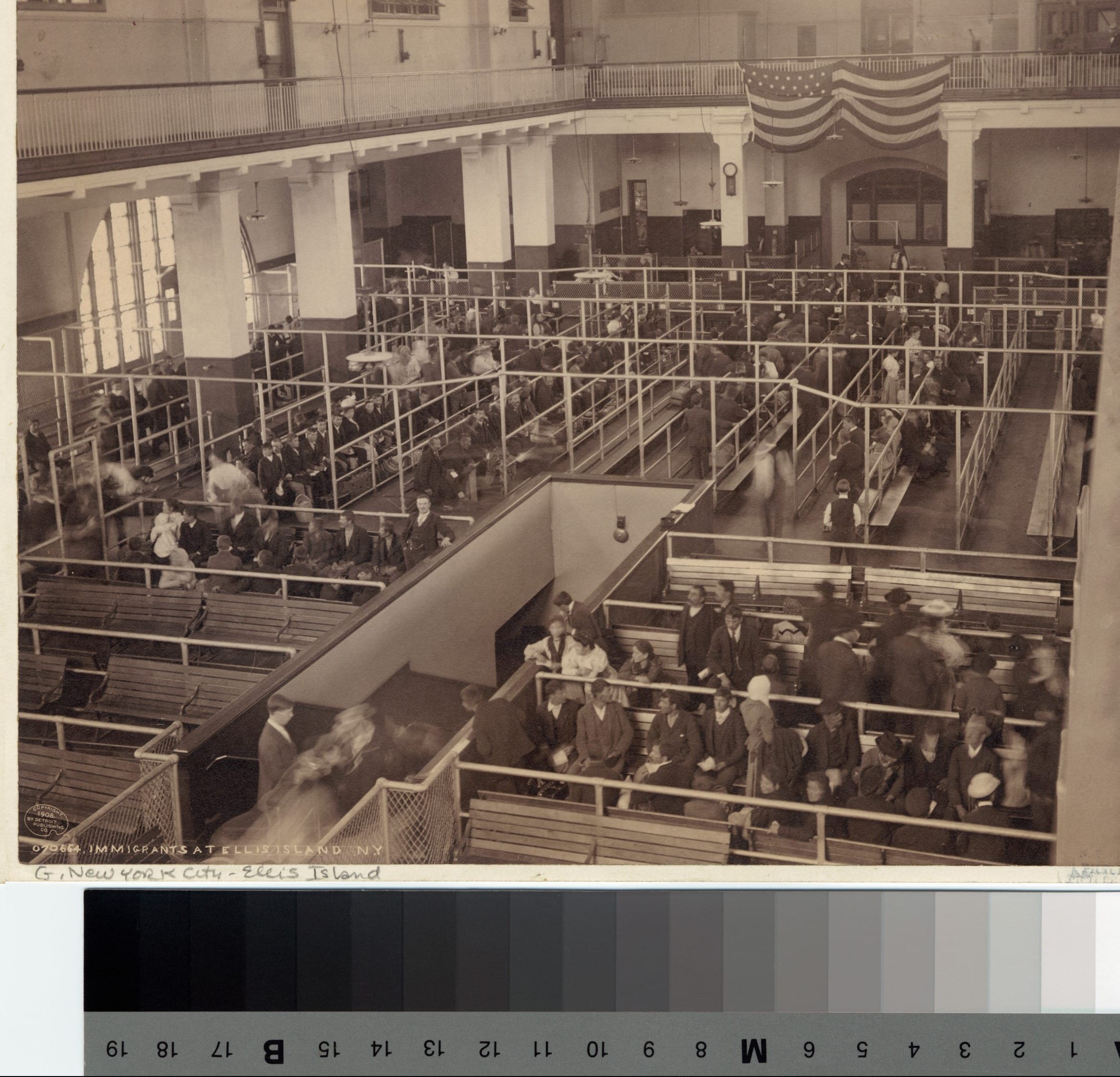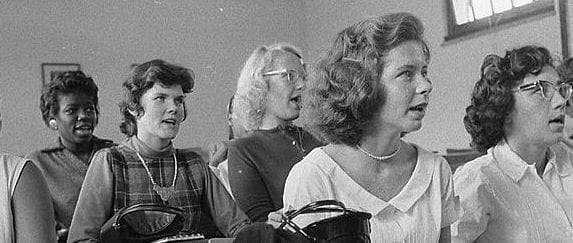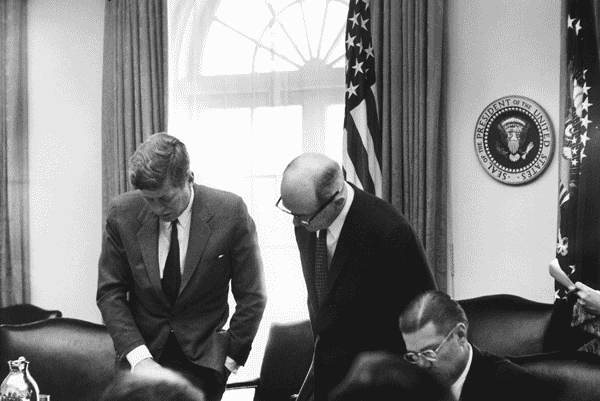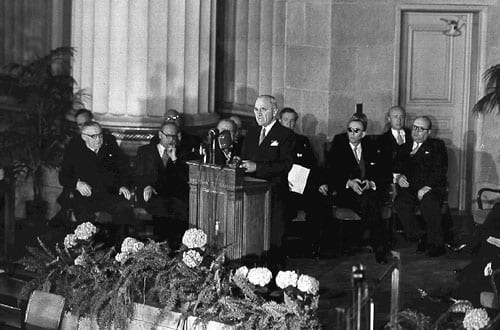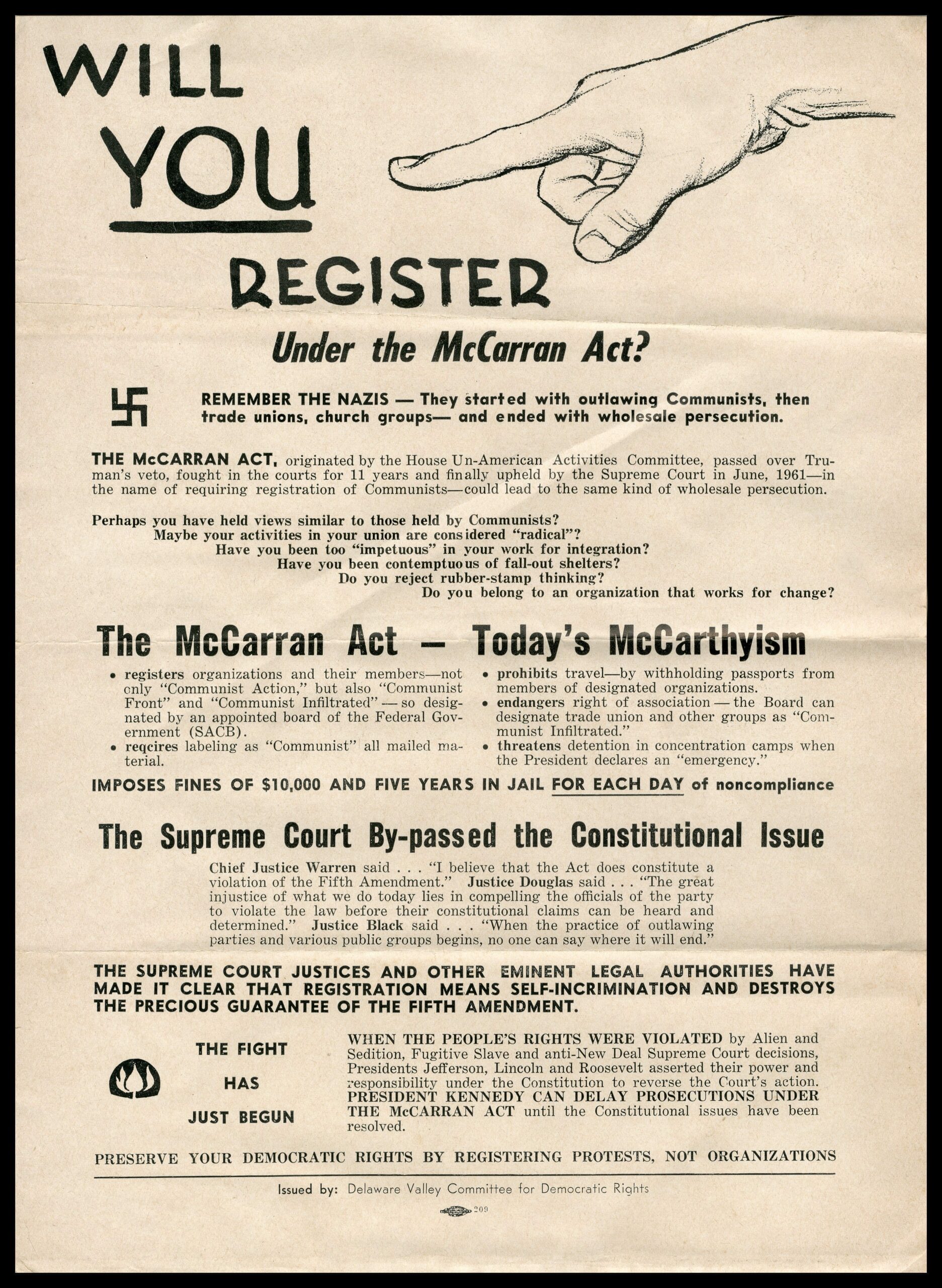
No related resources
Introduction
Writing for a narrow 5-4 majority, Justice Hugo L. Black enunciated a principle, the separation of church and state, which would henceforth dominate discussion of the First Amendment: “The First Amendment has erected a wall between church and state. That wall must be kept high and impregnable. We could not approve the slightest breach.” While using the familiar expression, separation of church and state, Black reinterpreted it and applied it in controversial ways to public schools, among other state and local government activities. The Court found in this case that the First Amendment Establishment Clause, which restricts only Congress, is applicable to states by the Fourteenth Amendment’s Due Process Clause. (West Virginia State Board of Education v. Barnette found that the Free Exercise Clause applied to the states.)
Justice Black concluded that “New Jersey has not breached [the wall of separation]” and affirmed a New Jersey court opinion finding no federal constitutional violation in the state’s support of transportation subsidies for both public and private school students. In Illinois ex rel. McCollum v. Board of Education of School District, he and the Court would come to a different conclusion regarding the Illinois practice of releasing students from class to attend voluntarily religious services in a public school building.
Black summarized the facts of the case in his opinion for the Court. We omit the concurring opinion of Justices Frank Murphy and William O. Douglas and the dissenting opinions of Justices Robert H. Jackson and Wiley B. Rutledge. This case should be read together with McCollum. A comprehensive dissenting opinion on these initial Establishment Clause cases is that of Justice William H. Rehnquist in Wallace v. Jaffree (1985).
Source: 330 U.S. 1 (1947), https://www.law.cornell.edu/supremecourt/text/330/1. We have included some footnotes from the opinion. Footnotes added by the editors are preceded by “Ed. note.”
Mr. Justice BLACK delivered the opinion of the Court.
A New Jersey statute authorizes its local school districts to make rules and contracts for the transportation of children to and from schools. The appellee,[1] a township board of education, acting pursuant to this statute, authorized reimbursement to parents of money expended by them for the bus transportation of their children on regular busses operated by the public transportation system. Part of this money was for the payment of transportation of some children in the community to Catholic parochial schools. These church schools give their students, in addition to secular education, regular religious instruction conforming to the religious tenets and modes of worship of the Catholic Faith. The superintendent of these schools is a Catholic priest.
The appellant[2] [Everson], in his capacity as a district taxpayer, filed suit in a state court challenging the right of the board to reimburse parents of parochial school students. . . . The New Jersey Court of Errors and Appeals reversed, holding that neither the statute nor the resolution passed pursuant to it was in conflict with the state constitution or the provisions of the federal Constitution in issue.
. . .
Second. The New Jersey statute is challenged as a “law respecting an establishment of religion.” The First Amendment, as made applicable to the states by the Fourteenth, Murdock v. Pennsylvania, 319 U.S. 105,[3] commands that a state “shall make no law respecting an establishment of religion, or prohibiting the free exercise thereof. . . .” These words of the First Amendment reflected in the minds of early Americans a vivid mental picture of conditions and practices which they fervently wished to stamp out in order to preserve liberty for themselves and for their posterity. Doubtless their goal has not been entirely reached; but so far has the nation moved toward it that the expression “law respecting an establishment of religion” probably does not so vividly remind present-day Americans of the evils, fears, and political problems that caused that expression to be written into our Bill of Rights. Whether this New Jersey law is one respecting an “establishment of religion” requires an understanding of the meaning of that language, particularly with respect to the imposition of taxes. Once again, therefore, it is not inappropriate briefly to review the background and environment of the period in which that constitutional language was fashioned and adopted.
A large proportion of the early settlers of this country came here from Europe to escape the bondage of laws which compelled them to support and attend government-favored churches. The centuries immediately before and contemporaneous with the colonization of America had been filled with turmoil, civil strife and persecutions, generated in large part by established sects determined to maintain their absolute political and religious supremacy. With the power of government supporting them, at various times and places, Catholics had persecuted Protestants, Protestants had persecuted Catholics, Protestant sects had persecuted other Protestant sects, Catholics of one shade of belief had persecuted Catholics of another shade of belief, and all of these had from time to time persecuted Jews. In efforts to force loyalty to whatever religious group happened to be on top and in league with the government of a particular time and place, men and women had been fined, cast in jail, cruelly tortured, and killed. Among the offenses for which these punishments had been inflicted were such things as speaking disrespectfully of the views of ministers of government-established churches, non-attendance at those churches, expressions of nonbelief in their doctrines, and failure to pay taxes and tithes to support them.
These practices of the old world were transplanted to, and began to thrive in, the soil of the new America. The very charters granted by the English crown to the individuals and companies designated to make the laws which would control the destinies of the colonials authorized these individuals and companies to erect religious establishments which all, whether believers or nonbelievers, would be required to support and attend. An exercise of this authority was accompanied by a repetition of many of the old-world practices and persecutions. Catholics found themselves hounded and proscribed because of their faith; Quakers who followed their conscience went to jail; Baptists were peculiarly obnoxious to certain dominant Protestant sects; men and women of varied faiths who happened to be in a minority in a particular locality were persecuted because they steadfastly persisted in worshipping God only as their own consciences dictated. And all of these dissenters were compelled to pay tithes and taxes to support government-sponsored churches whose ministers preached inflammatory sermons designed to strengthen and consolidate the established faith by generating a burning hatred against dissenters.
These practices became so commonplace as to shock the freedom-loving colonials into a feeling of abhorrence.[4] The imposition of taxes to pay ministers’ salaries and to build and maintain churches and church property aroused their indignation. It was these feelings which found expression in the First Amendment. No one locality and no one group throughout the Colonies can rightly be given entire credit for having aroused the sentiment that culminated in adoption of the Bill of Rights’ provisions embracing religious liberty. But Virginia, where the established church had achieved a dominant influence in political affairs and where many excesses attracted wide public attention, provided a great stimulus and able leadership for the movement. The people there, as elsewhere, reached the conviction that individual religious liberty could be achieved best under a government which was stripped of all power to tax, to support, or otherwise to assist any or all religions, or to interfere with the beliefs of any religious individual or group.
The movement toward this end reached its dramatic climax in Virginia in 1785-86 when the Virginia legislative body was about to renew Virginia’s tax levy for the support of the established church. Thomas Jefferson and James Madison led the fight against this tax. Madison wrote his great Memorial and Remonstrance against the law.[5] In it, he eloquently argued that a true religion did not need the support of law; that no person, either believer or nonbeliever, should be taxed to support a religious institution of any kind; that the best interest of a society required that the minds of men always be wholly free, and that cruel persecutions were the inevitable result of government-established religions. Madison’s Remonstrance received strong support throughout Virginia, and the assembly postponed consideration of the proposed tax measure until its next session. When the proposal came up for consideration at that session, it not only died in committee, but the assembly enacted the famous “Virginia Bill for Religious Liberty” originally written by Thomas Jefferson. The preamble to that Bill stated, among other things, that
Almighty God hath created the mind free; that all attempts to influence it by temporal punishments or burthens, or by civil incapacitations, tend only to beget habits of hypocrisy and meanness, and are a departure from the plan of the Holy author of our religion, who being Lord both of body and mind, yet chose not to propagate it by coercions on either . . . ; that to compel a man to furnish contributions of money for the propagation of opinions which he disbelieves is sinful and tyrannical; that even the forcing him to support this or that teacher of his own religious persuasion is depriving him of the comfortable liberty of giving his contributions to the particular pastor whose morals he would make his pattern. . . .
And the statute itself enacted
That no man shall be compelled to frequent or support any religious worship, place, or ministry whatsoever, nor shall be enforced, restrained, molested, or burthened in his body or goods, nor shall otherwise suffer on account of his religious opinions or belief. . . .
This Court has previously recognized that the provisions of the First Amendment, in the drafting and adoption of which Madison and Jefferson played such leading roles,[6] had the same objective, and were intended to provide the same protection against governmental intrusion on religious liberty as the Virginia statute. Prior to the adoption of the Fourteenth Amendment, the First Amendment did not apply as a restraint against the states. Most of them did soon provide similar constitutional protections for religious liberty. But some states persisted for about half a century in imposing restraints upon the free exercise of religion and in discriminating against particular religious groups. . . .
The meaning and scope of the First Amendment, preventing establishment of religion or prohibiting the free exercise thereof, in the light of its history and the evils it was designed forever to suppress, have been several times elaborated by the decisions of this Court prior to the application of the First Amendment to the states by the Fourteenth. The broad meaning given the amendment by these earlier cases has been accepted by this Court in its decisions concerning an individual’s religious freedom rendered since the Fourteenth Amendment was interpreted to make the prohibitions of the First applicable to state action abridging religious freedom. There is every reason to give the same application and broad interpretation to the “Establishment of Religion” Clause. . . .
The “Establishment of Religion” Clause of the First Amendment means at least this: neither a state nor the federal government can set up a church. Neither can pass laws which aid one religion, aid all religions, or prefer one religion over another. Neither can force nor influence a person to go to or to remain away from church against his will or force him to profess a belief or disbelief in any religion. No person can be punished for entertaining or professing religious beliefs or disbeliefs, for church attendance or non-attendance. No tax in any amount, large or small, can be levied to support any religious activities or institutions, whatever they may be called, or whatever form they may adopt to teach or practice religion. Neither a state nor the federal government can, openly or secretly, participate in the affairs of any religious organizations or groups, and vice versa. In the words of Jefferson, the clause against establishment of religion by law was intended to erect “a wall of separation between church and state.”[7]
We must consider the New Jersey statute in accordance with the foregoing limitations imposed by the First Amendment. But we must not strike that state statute down if it is within the state’s constitutional power, even though it approaches the verge of that power. . . . New Jersey cannot, consistently with the “Establishment of Religion” Clause of the First Amendment, contribute tax raised funds to the support of an institution which teaches the tenets and faith of any church. On the other hand, other language of the amendment commands that New Jersey cannot hamper its citizens in the free exercise of their own religion. Consequently, it cannot exclude individual Catholics, Lutherans, Mohammedans, Baptists, Jews, Methodists, Nonbelievers, Presbyterians, or the members of any other faith, because of their faith, or lack of it, from receiving the benefits of public welfare legislation. While we do not mean to intimate that a state could not provide transportation only to children attending public schools, we must be careful, in protecting the citizens of New Jersey against state-established churches, to be sure that we do not inadvertently prohibit New Jersey from extending its general state law benefits to all its citizens without regard to their religious belief.
Measured by these standards, we cannot say that the First Amendment prohibits New Jersey from spending tax-raised funds to pay the bus fares of parochial school pupils as a part of a general program under which it pays the fares of pupils attending public and other schools. It is undoubtedly true that children are helped to get to church schools. There is even a possibility that some of the children might not be sent to the church schools if the parents were compelled to pay their bus fares out of their own pockets when transportation to a public school would have been paid for by the state. The same possibility exists where the state requires a local transit company to provide reduced fares to school children, including those attending parochial schools, or where a municipally owned transportation system undertakes to carry all school children free of charge. Moreover, state-paid policemen, detailed to protect children going to and from church schools from the very real hazards of traffic, would serve much the same purpose and accomplish much the same result as state provisions intended to guarantee free transportation of a kind which the state deems to be best for the school children’s welfare. And parents might refuse to risk their children to the serious danger of traffic accidents going to and from parochial schools the approaches to which were not protected by policemen. Similarly, parents might be reluctant to permit their children to attend schools which the state had cut off from such general government services as ordinary police and fire protection, connections for sewage disposal, public highways and sidewalks. Of course, cutting off church schools from these services so separate and so indisputably marked off from the religious function would make it far more difficult for the schools to operate. But such is obviously not the purpose of the First Amendment. That Amendment requires the state to be a neutral in its relations with groups of religious believers and nonbelievers; it does not require the state to be their adversary. State power is no more to be used so as to handicap religions than it is to favor them.
This Court has said that parents may, in the discharge of their duty under state compulsory education laws, send their children to a religious, rather than a public, school if the school meets the secular educational requirements which the state has power to impose. See Pierce v. Society of Sisters, 268 U.S. 510. It appears that these parochial schools meet New Jersey’s requirements. The state contributes no money to the schools. It does not support them. Its legislation, as applied, does no more than provide a general program to help parents get their children, regardless of their religion, safely and expeditiously to and from accredited schools.
The First Amendment has erected a wall between church and state. That wall must be kept high and impregnable. We could not approve the slightest breach. New Jersey has not breached it here.
- 1. Ed. note: appellee is the party against whom an appeal is filed.
- 2. Ed. note: an appellant is a person who applies to a higher court to reverse the decision of a lower court.
- 3. Ed. note: Murdock applied the First Amendment to the states by the Fourteenth. Everson applied the establishment clause of the First Amendment to the states by the Fourteenth.
- 4. Madison wrote to a friend in 1774: “That diabolical, hell-conceived principle of persecution rages among some. . . . This vexes me the worst of anything whatever. There are at this time in the adjacent country not less than five or six well-meaning men in close jail for publishing their religious sentiments, which in the main are very orthodox. I have neither patience to hear, talk, or think of anything relative to this matter; for I have squabbled and scolded, abused and ridiculed, so long about it to little purpose, that I am without common patience. So I must beg you to pity me, and pray for liberty of conscience to all.” (Writings of James Madison, Vol. I [1900] 18, 21).
- 5. Ed. note: For the text of the Memorial and Remonstrance, see https://teachingamericanhistory.org/library/document/memorial-and-remonstrance/?_sf_s=Memorial+and+remonstrance.
- 6. Ed. note: Thomas Jefferson had no direct role in the drafting or adoption of the First Amendment, although he was in favor of a Bill of Rights as an amendment to the Constitution.
- 7. Ed. note: Jefferson to the Danbury Baptist Association, January 1, 1802, https://teachingamericanhistory.org/library/document/letter-to-the-danbury-baptist-association/?_sf_s=Danbury
The Truman Doctrine
March 12, 1947
Conversation-based seminars for collegial PD, one-day and multi-day seminars, graduate credit seminars (MA degree), online and in-person.

